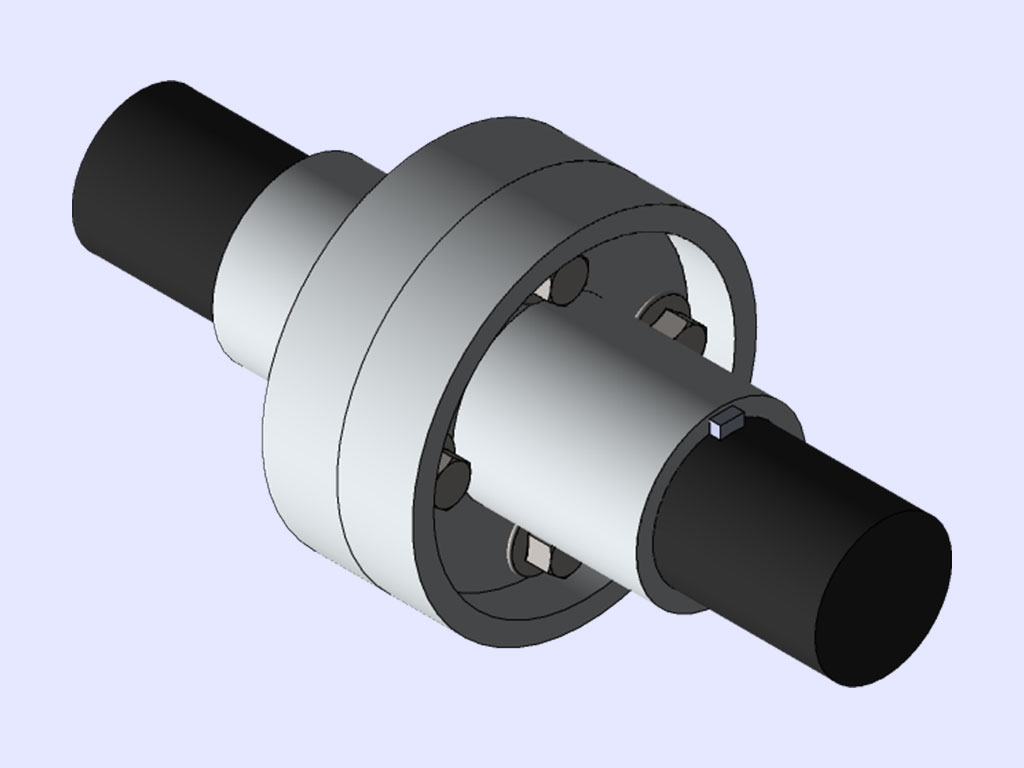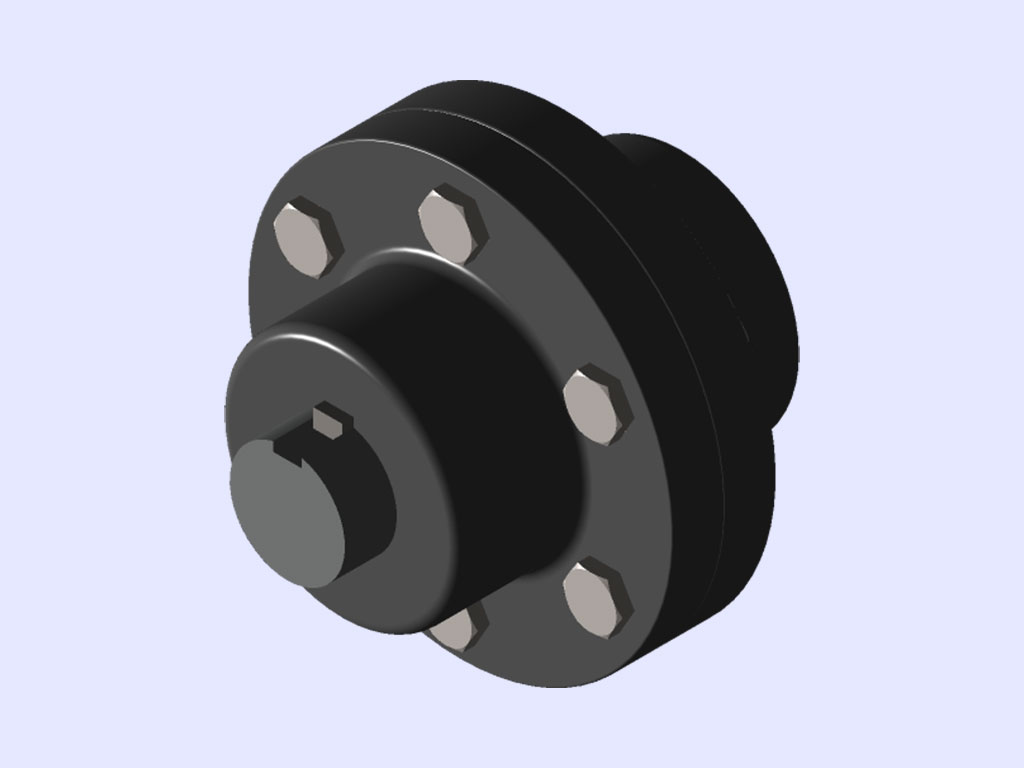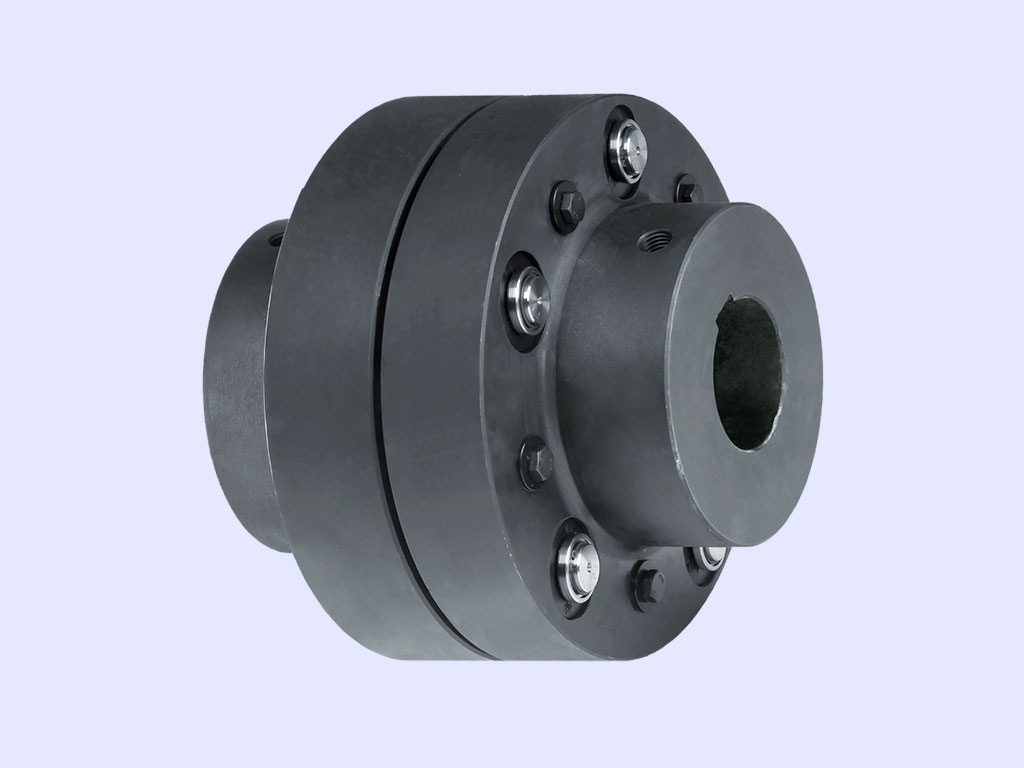What is flange coupling?
Flange couplings are tagged as a mechanical device which aids in connecting two different shafts in order to carry out smooth transition of power or torque further in components. There is the presence of two flanges mounted upon each particular shaft end. It will result in a reliable connection between nuts, bolts and gaskets. Flange couplings have specific designs in which it is crucial to note precise alignment, vibration resistance and high torque transmission etc.
Components of flange coupling
Flange coupling typically contains two flanges, each of which is attached to an end portion of the shaft. These flanges after proper placement are bolted together following a sealing mechanism or with the help of a gasket placed in between. The design of the flange coupling might differ based on the requirement of the particular area. But generally, these are composed of the following main components.
Flanges
Flanges are the flat circular disc which possess holes for bolting up with the shaft. These are mainly composed of materials like stainless steel, cast iron, aluminum or more. All of such composition imparts strength and durability to flanges making it an ideal choice for connection.
Bolts
Bolts are aligned and adjusted with holes present on the flange plate. These are tightened up securely to connect the two different flanges together.
Gasket or seal
A gasket is basically placed in between the two flanges to minimize the possibility of leakage of fluids or other lubricants flowing via pipe. Also, it has a major role in maintaining the alignment of the shaft for proper sealing.
Types of Flange couplings
There are mainly three different type of the flange coupling which has flourished use in industries. Check out each of the types and understand the basic difference between each which ultimately helps in knowing the engineering behind flange coupling.
Protected flange coupling

The design of this flange coupling has the presence of protective or outer covering like shield round assembly of coupling. Hence, it is named as protected flange coupling. The main objective of this protective enclosure in design is to protect the coupling from any outer environmental contaminants. It includes moisture, debris, dust, dirt etc. Therefore, it works as a safety barrier which aids in preventing any sort of accidents caused due to contact with rotating components of couplings.
Protected flange couplings are installed in the industrial set up which demands safeguard of the couplings for their long term reliable use. These protective enclosures are composed of materials like rubber, plastic, metal or more. The choice of the material depends on the external environment of point of application and safety requirements.
Unprotected flange coupling

An unprotected flange coupling doesn’t possess any kind of protective covering round the assembly of coupling. Each shaft is keyed for the boss of the flange along with a counter sunk key. Henceforth, both the flanges are coupled for rings of bolts together.
Unprotected flange coupling is applied in environmental conditions which always remain under control. Also, these are typically installed in areas which face lower chances for contamination or exposure to some of the moving parts. It is often found in places where maintenance and repairs are straightforward. As there is no outer protective layer, flange couplings need regular service and inspection.
Marine flange coupling

This type of flange coupling is specifically manufactured and designed for its application in marine areas peculiarly in ships and boats. Thus, it is named as marine flange coupling. There is presence of integral shafts in the design of coupling. Here, the number of bolts in the system is decided based upon the perimeter of the shaft. Headless bolts with tapered design are typically used for connecting the marine flange couplings. These flanges are designed to withstand the unique marine environmental conditions. It mainly includes high humidity, saltwater and tolerating extreme corrosive conditions etc.
Due to the demand of tolerating highly corrosive environments, marine flange coupling are composed of stainless steel or any other type of non-corrosive alloys. These are designed in a manner which aids in maintaining the integrity and functionality even when flanges need to face constant exposure to humidity and other heavy vibrations from sea waves. The couplings are typically used to connect the motor to the propeller shaft present in marine vessels. This design will ensure efficient power transaction with reliable propulsion.
Materials of flange coupling
Flange couplings are an unavoidable component of many industrial and mechanical areas. The composition of material and its choice is critical to ensure reliability, enhanced performance and durability at point of installation. How will you select the particular material for flange coupling? Well! The selection of the flange coupling material is influenced by many factors. It is mainly opted with considering pressure, temperature, environmental conditions, intended use made for coupling and more. Check out this list which are some of the common materials used in flange coupling preparation.
- Cast iron
- PVC
- Stainless steel
- Carbon steel
- Composites
- Steel alloys
Engineering behind flange coupling design
A flange coupling is used to serve the basic purpose of connecting two shafts together with maintaining alignment and transmission of proper torque. The engineering behind its design reflects the reliability, robustness and its abilities to handle the high loads. Here is the breakdown of the principles that are involved in engineering the design of flange coupling.
Selection of material
Choose the material according to the needs of the installation area. For instance, cast iron is chosen only when the area needs to handle moderate loads. On other hands, steel or its alloys are preferable when the talks run for high load applications. It is crucial to select the right material so as to withstand the shear stress and torque without deforming from its original shape. Flange coupling should also be able to tolerate the corrosion or wear conditions that arise from constant exposure for harsh environments.
Key design components
Flange
Each of the shafts has the flange positioned at the end. The flanges made with precise dimension ensure alignment and get fastened up together with usage of bolts.
Bolts
Bolts are mainly used to buckle up two flanges together. Bolts might experience the tension which is transmitted from the torque. Hence, it is crucial to choose the appropriate size of the bolts to handle the expected load.
Keys and keyways
Following a key is placed in between the flanges to minimize the relative rotation. Further, these are processed into machines for creating a locking mechanism.
Hub
Hub is considered as the central portion of the flange which fits on the shaft. Hubs might come up in cylindrical or tapered shape. The shape depends upon the coupling type and ease of installation
Torque transmission
The main aim of the flange coupling is for smooth transaction between torque of one shaft to another. The design must focus that a flange coupling should handle the maximum expected torque without any deformation or slipping observed in shape. It is calculated based on the torque equation.
T=P/2 (3.14)N
Alignment and tolerances
Proper alignment is critical which can aid in avoiding the vibration and stress in the medium. Misalignment in this arrangement can lead to wear or failure in the coupling system. The design is defined to tolerate any sort of angular or axial misalignment. But upon all a flexible coupling is a more appropriate option.
Load considerations
A flange coupling has the ability for handling many different types of loads. It mainly includes as below mentioned loads:
- Axial loads
- Bending loads
- Torsional loads
Key, bolts and flange should have the ability to handle the loads with its strength and durability for avoiding failure.
Safety factor
A safety factor is added into the design of flange coupling which provides a support to tackle any unexpected overloads or harsh operational conditions. Most probably a safety factor of 1.5 to 2.5 is applied based on criticality of the system and other operational circumstances.
Types of flange couplings
There are mainly two types of flange couplings i.e. rigid and flexible. Rigid flange coupling is used for precise alignment and easy torque transaction in between shafts. Flexible flange coupling are designed to absorb sudden shocks and vibrations. These are also used to fill slight misalignment in the system. This is the presence of some flexible elements like rubber or synthetic materials placed in between the flanges.
Stress and fatigue analysis
Shear stress is considered as the crucial factor in complex design of flange coupling for keys and bolts. The calculated stress at these points comes from equation:
Shear stress= T/A
Where, T= torque value
A= area of cross sectional point of interest
Fatigue analysis is conducted on flange coupling to ensure it could withstand any cycling overloads during its entire operational lifespan.
Assembly and maintenance
The design allows an ease of assembly and disassembly. This feature is most useful for maintenance purposes of the piping system. Flanges are especially designed with holes or slots for easy alignment of components at time of installation.
What are the considerations when using flange coupling?
Flange couplings will indeed serve you with several benefits once after installation. But yes there are some important considerations to keep in mind while using the same.
Selection of material
You should select the material of the flange coupling which seems compatible with the outer operating condition of the system. It includes pressure, temperature or other types of fluids involved in transport.
Tightening of bolts
Follow proper torque and sequence when sitting to tighten the bolts. Proper tightening is essential to maintain the integrity of the coupling.
Maintenance
Regular inspection, repairs and maintenance are important to make a check for optimal functioning of flange coupling.
Alignment
Proper alignment is very important for preventing premature damage and wear on coupling and other machinery.
Applications of flange coupling
Flange coupling is basically applied on medium to heavy ranges. Therefore, it is used in wide sector of industries which are as follows:
Industrial machinery
Flange coupling is mainly applied in compressors, conveyors, pumps or other types of machinery where it is used to transmit with reliability and efficiency.
Automobile industry
Flange coupling is used in some drivetrain components which makes connections for driveshaft and transmission.
Marine engineering
In the marine propeller shaft, flange coupling is connected in the engine. Here it plays the role of connection of the engine shaft with the propeller shaft.
Aerospace
Flange coupling aids in precise transmission of the power in between rotating components employed in aircraft and spacecraft.
Benefits of using flange coupling
Flange coupling readily serves several benefits making it an ideal choice for the industrial applications.
Precise alignment
The bolted design used in flange coupling aids in easy and precise alignment of shafts together. It ultimately reduces wear and tear in the system. Hence, it is beneficial in extending the lifespan of various components connected.
High torque dimensions
Flange couplings are typically designed to withstand the high torque levels. Therefore, it is a preferable option to install even in heavy duty operating conditions.
Ease of maintenance
It is very easy to install and maintain the flange coupling due to its simple yet compatible design.
Vibration dampening
Machinery and vehicles especially face the high vibrations. Flange coupling installed in such areas will allow site for smooth and quiet operations with its ability to effectively dampen vibrations.
Conclusion
Flange couplings are not appreciated until used once and experienced its significance in rotating mechanical systems. It has the ability to reliably and effectively transmit the power with ease of maintenance. Understand the advantage, design and considerations to ensure a smooth and precise running of the machine. Remember flange coupling always makes a backbone for machines working hard connecting mechanical dots.
FAQs
What is coupling engineering?
A coupling engineering aids in connecting two shafts together as a mechanical element. It is basically used for transmission of power across different drive sides.
What is the significance of flange coupling?
Main significance of the flange coupling is to connect the two pipes along with handling pressure in the system.
What are the materials used in flange coupling composition?
Materials like carbon steel, stainless steel, zinc plates etc are used in composition of the flange coupling. These materials are selected depending upon the operational conditions of the installation point of flange couplings.
What is the basic difference between flange coupling and flange?
Flange couplings are connected easily with the help of the bolts. It is disassembled frequently when scheduled maintenance of heavy duty areas. However, flanges are used for specially connecting the pipes with different diameters facing high pressure and temperature conditions, wear and tear etc.
How many types of couplings are there?
There are many types of couplings designed to serve various purposes. Some types include jaw style couplings, steel gear couplings, torque limiting couplings, gird type couplings, flexible shaft couplings and more.




